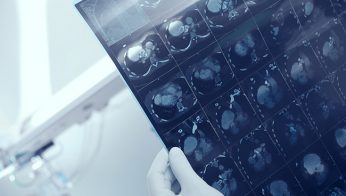PET stands for Positron Emission Tomography. In a PET scan, a physician injects a patient with a liquid containing very low level of radioactive content called radioactive tracer. After a waiting period during which organs and tissues absorb tracer a series of chemical events in body tissue, the tracer emits photons that can be seen and translated into an image by the scanner.
